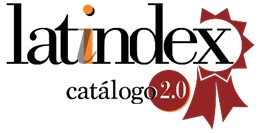Exploring aspects of computational thinking in mathematical modelling projects: Insights from a project week in a German secondary school
DOI:
https://doi.org/10.48489/quadrante.36870Keywords:
computational thinking, mathematical modelling, mathematics education, secondary education, problem solving, STEM educationAbstract
This study investigates the role of computational thinking (CT) within mathematical modelling projects in secondary school mathematics education. We conducted a four-day mathematical modelling project with 14 students from grades 9 to 11 during a project week before summer vacations at a secondary school in Germany. Our observations revealed that various CT aspects, such as data collection, pattern recognition, and abstraction, naturally emerged in students' modelling activities, with these aspects being closely tied to the specific nature of the modelling problems. These findings suggest that mathematical modelling projects offer rich opportunities to develop CT skills in students. Furthermore, our research highlights how fostering CT can enrich the modelling process and assist students in the mathematical problem-solving process. By illustrating the synergy between CT and mathematical modelling, this study underscores the potential of integrating computational thinking into mathematics education to prepare students for the challenges of the digital age.
References
Aebli, H. (2019). Zwölf Grundformen des Lehrens: Eine allgemeine Didaktik auf psychologischer Grundlage: Medien und Inhalte didaktischer Kommunikation, der Lernzyklus (15th ed.). Klett-Cotta.
Ang, K. C. (2021). Computational Thinking and Mathematical Modelling. In F. K. S. Leung, G. A. Stillman, G. Kaiser, & K. L. Wong (Eds.), Mathematical Modelling Education in East and West (pp. 19–34). Springer International Publishing. https://doi.org/10.1007/978-3-030-66996-6_2
Blum, W., & Leiß, D. (2007). 5.1—How do Students and Teachers Deal with Modelling Problems? In C. Haines, P. Galbraith, W. Blum, & S. Khan (Eds.), Mathematical Modelling (pp. 222–231). Woodhead Publishing. https://doi.org/10.1533/9780857099419.5.221
Bock, W., & Bracke, M. (2015). Applied School Mathematics—Made in Kaiserslautern. In H. Neunzert & D. Prätzel-Wolters (Eds.), Currents in Industrial Mathematics: From Concepts to Research to Education (pp. 403–437). Springer. https://doi.org/10.1007/978-3-662-48258-2_11
Bock, W., Bracke, M., & Capraro, P. (2017). Product orientation in modeling tasks. In T. Dooley & G. Gueudet (Eds.), Proceedings of CERME 10. Dublin, Ireland. DCU Institute of Education and ERME. https://hal.science/hal-01933444
Borromeo Ferri, R. (2007). Modelling problems from a cognitive perspective. In C. Haines, P. Galbraith, W. Blum, & S. Khan (Eds.), Mathematical Modelling (pp. 260–270). Woodhead Publishing. https://doi.org/10.1533/9780857099419.5.260
Dong, Y., Catete, V., Jocius, R., Lytle, N., Barnes, T., Albert, J., Joshi, D., Robinson, R., & Andrews, A. (2019). PRADA: A practical model for integrating computational thinking in K-12 Education. Proceedings of the 50th ACM Technical Symposium on Computer Science Education (pp. 906–912). https://doi.org/10.1145/3287324.3287431
Greefrath, G. (2011). Using Technologies: New Possibilities of Teaching and Learning Modelling – Overview. In G. Kaiser, W. Blum, R. Borromeo Ferri, & G. Stillman (Eds.), Trends in Teaching and Learning of Mathematical Modelling (Vol. 1, pp. 301–304). Springer. https://doi.org/10.1007/978-94-007-0910-2_30
Greefrath, G., & Vorhölter, K. (2016). Teaching and learning mathematical modelling: approaches and developments from German speaking countries. In G. Greefrath & K. Vorhölter (Eds.), Teaching and Learning Mathematical Modelling: Approaches and Developments from German Speaking Countries (pp. 1–42). Springer. https://doi.org/10.1007/978-3-319-45004-9_1
Kalelioğlu, F., Gülbahar, Y., & Kukul, V. (2016). A framework for computational thinking based on a systematic research review. Baltic Journal of Modern Computing, 4(3), 583–596.
Kallia, M., van Borkulo, S. P., Drijvers, P., Barendsen, E., & Tolboom, J. (2021). Characterising computational thinking in mathematics education: A literature-informed Delphi study. Research in Mathematics Education, 23(2), 159–187. https://doi.org/10.1080/14794802.2020.1852104
Mayring, P. (2014). Qualitative content analysis: Theoretical foundation, basic procedures and software solution. Klagenfurt. https://nbn-resolving.org/urn:nbn:de:0168-ssoar-395173
Schoenfeld, A. H. (1987). Pólya, problem solving, and education. Mathematics Magazine, 60(5), 283–291. https://doi.org/10.1080/0025570X.1987.11977325
Selby, C., & Woollard, J. (2013). Computational thinking: The developing definition [Monograph]. University of Southampton. https://eprints.soton.ac.uk/356481/
Shute, V. J., Sun, C., & Asbell-Clarke, J. (2017). Demystifying computational thinking. Educational Research Review, 22, 142–158. https://doi.org/10.1016/j.edurev.2017.09.003
Teck, L. K., Abdullah, A. H., Mokhtar, M., Zainuddin, S. A. H. S., & Rahman, S. N. S. A. (2023). The development of computational thinking and mathematics problem solving skills through mathematics modelling activities. Sains Humanika, 15(2), Article 2. https://doi.org/10.11113/sh.v15n2.1987
Villa-Ochoa, J. A., Carmona-Mesa, J. A., Quiroz-Vallejo, D. A., Castrillon-Yepes, A., & Farsani, D. (2022). Computational thinking in mathematical modeling projects. A case study with future mathematics teachers. In Á. Rocha, C. Ferrás, A. Méndez Porras, & E. Jimenez Delgado (Eds.), Information Technology and Systems (Vol. 414, pp. 460–470). Springer. https://doi.org/10.1007/978-3-030-96293-7_38
Weintrop, D., Beheshti, E., Horn, M., Orton, K., Jona, K., Trouille, L., & Wilensky, U. (2016). Defining computational thinking for mathematics and science classrooms. Journal of Science Education and Technology, 25(1), 127–147. https://doi.org/10.1007/s10956-015-9581-5
Wing, J. M. (2006). Computational thinking. Communications of the ACM, 49(3), 33–35. https://doi.org/10.1145/1118178.1118215
Wing, J. M. (2010). Computational Thinking: What and Why?. https://www.cs.cmu.edu/~CompThink/resources/TheLinkWing.pdf
Ye, H., Liang, B., Ng, O.-L., & Chai, C. S. (2023). Integration of computational thinking in K-12 mathematics education: A systematic review on CT-based mathematics instruction and student learning. International Journal of STEM Education, 10(1), 3. https://doi.org/10.1186/s40594-023-00396-w











